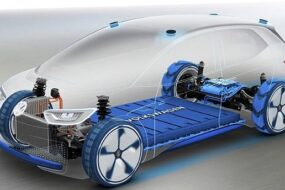Drones Advantages in Age of COVID-19
Considering the progressing COVID-19 pandemic, some developing Drones Advantages in Age of COVID-19 innovations once thought of as too obtrusive or inconvenient are by and large quickly reevaluated. Augmented reality, supercomputing, and computerized reasoning are a couple of them.
Rethinking the capability of automatons during the pandemic is as yet approximate, however more data is coming out each day. Indeed, numerous reasonable regular citizen applications for drones are working territories like development, design, and investigation.

But there are many questions to ask before judging the degree of adaptability possessed by the global industry. Many regulatory frameworks exist at different levels of complexity for many good reasons, depending on the industry. What existing civilian drone applications could or satiate the demand for this global crisis? In what ways are they doing this already?
What are the different types of civilian drones?
Here is a brisk once-over of various kinds of non military personnel drones:
Multi-Rotor Drones: These automatons give the administrator huge camera control and can move in a bound territory. They have short flight times and little payload limit. They cost about USD 50-65,000.
The Mavic multi-rotor drone from DJI makes some flight memories of 21 minutes and a flight scope of 6562 feet. It accompanies a Lightning connector, a standard smaller scale USB connector, and a USB Type-C connector for moving substance shot from its 12 MP camera (settled by a three-hub gimbal) to registering gadgets. It packs some noteworthy sensor equipment to guarantee safe flight: five vision sensors, two ultrasonic range locaters, GPS and GLONASS, a couple of ultrasonic range locaters, and 24 specific PCs. It retails for USD 734.
Fixed-Wing Drones: These are long-continuance automatons and they spread a critical zone contrasted with the multi-rotor drones (contingent upon the expense). They are quicker however require a bigger territory for take-off and landing. There is even more an expectation to absorb information expected to fly and land these automatons. Fixed-wing automatons can be essentially more costly, running in cost from USD 400 to 150,000.
The Parrot Disco PFV is a fixed-wing drone for use in country situations or huge open zones. It has a flight scope of 1.2 miles and incorporates FPV goggles. It can remain in trip for around 45 minutes before requiring an energize. It is a fixed-wing drone intended for tenderfoots. For instance, it has programmed take-off and landing and an enemy of slow down framework. It retails for USD 445.
Single-Rotor Drones: These are an uncommon kind of automaton (essentially a helicopter) with a long flight go, similar to the fixed-wing drones. They are long-continuance since they are controlled by gas and, in this manner, they can convey heavier payloads. Be that as it may, being gas-controlled makes them more hazardous to fly and positively more risky to crash. Just a single rotor to control implies less generally speaking force is utilized in the single rotor drone. This can be a significant trademark in the event that you regularly take your automatons on broadened flights. Single rotor UAVs are better prepared to deal with huge payloads since they require longer cutting edges. Longer cutting edges turn at a more slow speed yet are unquestionably more vitality proficient accordingly. They will as a rule have any longer flight times than multi-rotor drones, all else being equivalent. Single rotor automatons may likewise be better for overwhelming payloads, in opposition to mainstream thinking. These are ideal for bigger reviews and planning since they are more qualified to convey rock solid magnetometers or LIDAR sensors. Cost: Unknown.
The Velos UAV has a particular payload rail framework that permits clients to change payloads or convey more than each heap in turn. Everything can be tweaked to suit explicit requirements. Warm cameras can be included, lidar sensors, gimbals, conveyance compartments, or magnetometers can be arranged by a client’s needs. It has a cruising pace of 18-43 mph, can convey payloads between .1 to 10 kg, and remain noticeable all around somewhere in the range of 30 and 70 minutes, contingent upon the battery design
How are drones currently helping treat people with COVID-19 around the world?
Zipline
USA-based startup Zipline is moving COVID-19 test tests from more than 1000 clinical offices in rustic territories of Ghana and conveying them to two urban areas in the nation where they are tried in labs. Zipline has run into administrative obstacles from the FAA when endeavoring to execute comparative projects in the U.S., however they are confident that a comparative program will be actualized in North Carolina inside a month.
Zipline’s fixed-wing drones dispatch from a sling at one of four dispersion communities spread across 400 miles of region in Ghana. The dispersion communities have activities stock, stockpiling, and apparatuses for professionals to perform different gathering, upkeep, and fix assignments.
Prior to taking off, a Zipline administrator makes sure about a battery pack and payload (up to 4 lbs. limit) into the specialty. The Zipline automaton’s material extended froth organization and long 11-foot wingspan assist it with arriving at velocities of almost 60 mpg and fly a scope of around 100 miles.
When airborne, the automaton can journey at around 60 mph and spread 100 miles. The fixed-wing make drops to a height of 40 feet when it is moving toward its objective. Once there, the automaton launches its payload and it glides down by means of paper parachute. After coming back to base, the Zipline drone slips and “terrains” when a snare on the back of the plane gets a string hung between to A-casings, halting and hanging between them.













No Comments